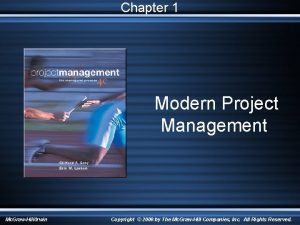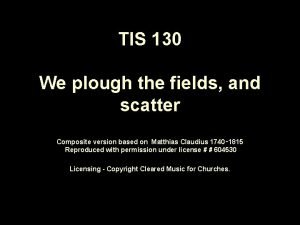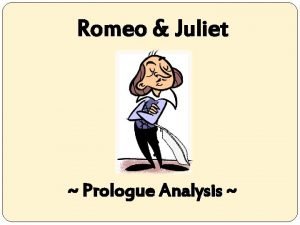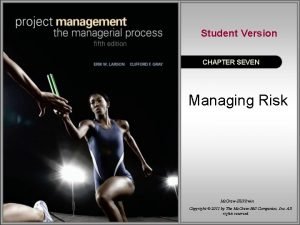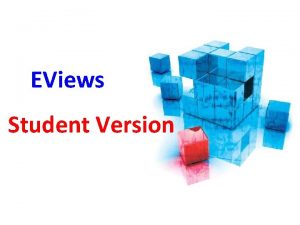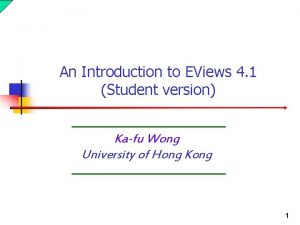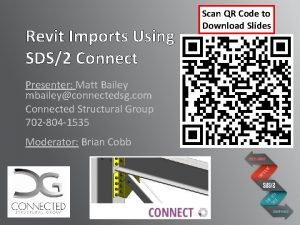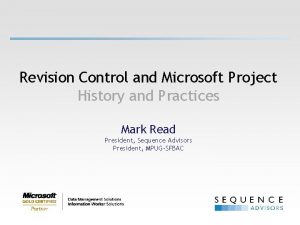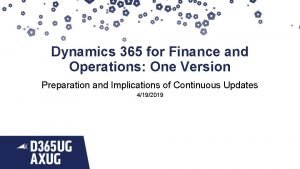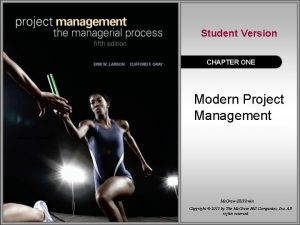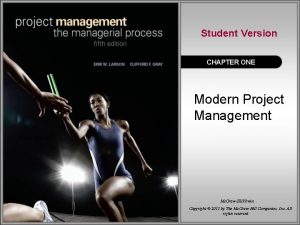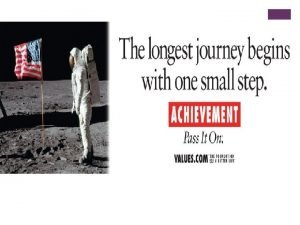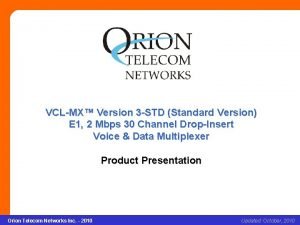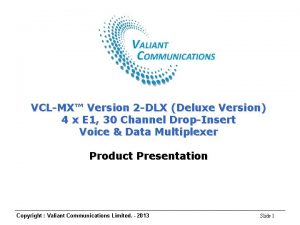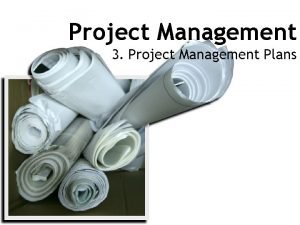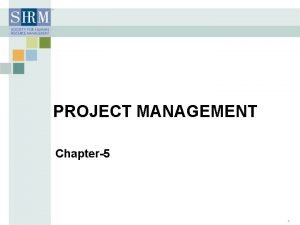Student Version CHAPTER ONE Modern Project Management Mc














- Slides: 14

Student Version CHAPTER ONE Modern Project Management Mc. Graw-Hill/Irwin Copyright © 2011 by The Mc. Graw-Hill Companies, Inc. All rights reserved.

An Overview of Project Management 5 e. 1– 2

What is a Project? • Project Defined – A complex, nonroutine, one-time effort limited by time, budget, resources, and performance specifications designed to meet customer needs. • Major Characteristics of a Project – Has an established objective. – Has a defined life span with a beginning and an end. – Requires across-the-organizational participation. – Involves doing something never been done before. – Has specific time, cost, and performance requirements. 1– 3

Programs versus Projects • Program Defined – A series of coordinated, related, multiple projects that continue over an extended time and are intended to achieve a goal. – A higher level group of projects targeted at a common goal. – Example: • Projects: – adding a warehouse; setting up a production line, building a bridge, construct a house • Program: – The Manhattan project, the Apollo project, the Operation Desert Storm. & a public housing program 1– 4

Comparison of Routine Work with Projects Routine, Repetitive Work Projects Practice scales on the piano organize a concert Attend classes and take notes Conduct a team project for a class Respond to a customer request Implement a call center Enter daily sales receipts into the accounting ledger Deploy an ERP system for a company Perform a routine production activity Design a production system or supply chain management system Design a component with a CAD system Develop a new product, i. Pad TABLE 1. 1 1– 5

Project Life Cycle FIGURE 1. 1 1– 6

The Challenge of Project Management • The Project Manager – Manages temporary, non-repetitive activities and frequently acts independently of the formal organization. • Is responsible for success and performance of the project. • Is the direct link to the customer and many other stakeholders. • Provides direction, coordination, and integration to the project team. • Marshals resources for the project. – Must induce the right people at the right time to address the right issues and make the right decisions. 1– 7

The Importance of Project Management • Factors leading to the increase in use of project management: – Compression of the product life cycle – Increased focus on customer – Small projects represent big problems – Corporate downsizing – Product/project complexity – Multiple bottom lines (profit, people, green planet, etc. ) 1– 8

Benefits of an Integrative Approach to Project Management • Integration (or centralization) of project management provides senior management with: – An overview of all project related activities – A big picture of how organizational resources are used – A risk assessment of all projects in the portfolio – An overall metric of the firm’s performance in managing projects relative to others in the industry – A better linkage between strategy/goals and actual project execution management 1– 9

Integrated Project Management Systems • Problems resulting from the use of piecemeal project management systems: – Do not tie together the overall strategies of the firm. – Fail to prioritize projects by their importance of their contribution to the firm. – Are not integrated throughout the project life cycle. – Do not match project planning and controls with organizational culture to make appropriate adjustments in support of project endeavors. – Are ineffective to grow corporate-wide project management expertise 1– 10

Major Functions of Portfolio Management • Oversee project selection. • Monitor aggregate resource levels and skills. • Encourage use of best practices. • Balance projects in the portfolio in order to represent a risk level appropriate to the organization. • Improve communication among all stakeholders. • Create a total organization perspective that goes beyond silo thinking. • Improve overall management of projects over time. 1– 11

Integrated Approach to Project Management FIGURE 1. 2 1– 12

The Technical and Sociocultural Dimensions of the Project Management Process FIGURE 1. 3 1– 13

Key Terms ISO 9000 Program Project life cycle Project Management Professional (PMP) Sociotechnical perspective 1– 14
 Importance of software project management
Importance of software project management Modern project profiles in software project management
Modern project profiles in software project management Introduction to project management kathy schwalbe
Introduction to project management kathy schwalbe Chapter 1 modern project management
Chapter 1 modern project management Chapter 1 modern project management
Chapter 1 modern project management Two houses in romeo and juliet
Two houses in romeo and juliet We plough the fields and scatter
We plough the fields and scatter Romeo + juliet prologue
Romeo + juliet prologue Risk student version
Risk student version Eviews student version
Eviews student version Eview student version
Eview student version Sds2 student version
Sds2 student version Ms project version history
Ms project version history Apostles creed methodist
Apostles creed methodist D365 one version
D365 one version




